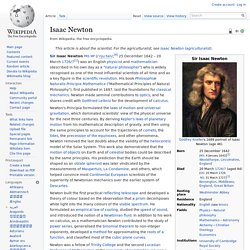

Nature. Stanford engineers develop a Star Trek-style tricorder to detect early stage cancer. Star Trek popularized the concept of the tricorder — a handheld device that can scan a person, object, or atmosphere and report on its health or makeup.

Now, a team of Stanford electrical engineers have taken a giant leap for mankind toward a real device that can do just that. The team’s research theorizes that microwaves and ultrasound can work together in a portable device to detect hidden objects, be they plastic explosives or deadly tumors. The research, led by Assistant Professor Amin Arbabian and Research Professor Pierre Khuri-Yakub, was primarily motivated by military technology developed to locate plastic explosives that would evade metal detectors.
The team says the same technology could have medical applications, with a potential to detect early stage cancers. Related: Scientists develop a way to detect cancer on patients’ breath The scanner works in a somewhat sneaky way. “We’ve been working on this for a little over two years,” Khuri-Yakub said. Via Stanford University. 100 Coolest Science Experiments on YouTube - X-Ray Technician Schools. Although YouTube has something of a reputation as a repository for the inane mental diarrhea of stunted man-children injuring each other for cheap laughs or shrill teenage drama queens shrieking like harpies over the latest bland, interchangeable lump passing as the epitome of masculine beauty, many others thankfully take advantage of its services as a portal to share their knowledge and educate viewers.

While few of the scientific offerings formally follow the scientific method or test an explicitly stated hypothesis, even those videos veering more towards demonstrating various principles, theories, and laws still offer visitors a chance to learn something about how the world around them operates. By this point, it should go without saying that many of the following videos contain procedures that may be dangerous to perform at home or without the proper equipment and/or training. Please do not duplicate any of these experiments unless assured that they are entirely safe for amateurs.
Exploration. The fastest accelerating electric vehicle in the world hits 100 km/h in 1.779 seconds. A team of students from the University of Stuttgart just designed, built and raced what could be the fastest accelerating electric vehicle in the world.

During carefully monitored tests, the student-designed E0711-6 electric car successfully managed to accelerate from 0-100km/h in a mind-blowing 1.779 seconds. The team is anxiously awaiting confirmation of a new record from the Guinness Book of World Records. The E0711-6 was designed and manufactured by a team of students—dubbed the Green Team—who participate in an annual project to create an open, single-seater formula electric race car. This year’s vehicle—the sixth incarnation since the project started—weighs in at just 165 kg (363 lb) and is built entirely from parts either constructed from scratch, or modified by, the student team. Related: Formula E unveils blazing fast Spark-Renault electric race car. General Science Resources. Mathematics. Biology. Science & News.
Discours. Universe. Creation vs Evolution. Science. Science. Science News Sources. SCIENCE - Other. Genetics. Synthetic & Systems Biology. Science and Technology News, Science Articles. New Technology, Science News, The Future Now. Popular Mechanics. Science - multiple grades. Inquiry. Mathematics & Physics. Science, Technology and innovation. Evolution Continues. Science. SCIENCE. Science Games. Science - multiple grades. Solar. Energy. Science. Life science. Scientific Practices. Tesla Coils. Science News Stories. Isaac Newton. Sir Isaac Newton PRS MP (/ˈnjuːtən/;[8] 25 December 1642 – 20 March 1726/7[1]) was an English physicist and mathematician (described in his own day as a "natural philosopher") who is widely recognised as one of the most influential scientists of all time and as a key figure in the scientific revolution.

His book Philosophiæ Naturalis Principia Mathematica ("Mathematical Principles of Natural Philosophy"), first published in 1687, laid the foundations for classical mechanics. Newton made seminal contributions to optics, and he shares credit with Gottfried Leibniz for the development of calculus. Science! Physics. Pharmacognosy. Pharmacognosy is the study of medicines derived from natural sources.

The American Society of Pharmacognosy defines pharmacognosy as "the study of the physical, chemical, biochemical and biological properties of drugs, drug substances or potential drugs or drug substances of natural origin as well as the search for new drugs from natural sources. "[1] It is also defined as the study of crude drugs. Introduction[edit] The word "pharmacognosy" is derived from the Greek words φάρμακον pharmakon (drug), and γνῶσις gnosis (knowledge).
Jodrell Bank Centre for Astrophysics. Science. Cool Science Facts. ABC Science. Hot tags Weather Climate Change Planets and Asteroids Archaeology Fossils Editor's choice Sunday, 15 January 2017 RN Offtrack Counting birds to save the Murray-Darling Friday, 18 November 2016 Professor Richard Kingsford has spent much of his life counting birds: a critical body of work that shows Australia's rivers are under threat.

Great Moments in Science The earworms you can't get out of your head Tuesday, 29 November 2016If you've ever had a song stuck in your head, you'll know it's annoying. Photos Incredible inner space Venture into the micro world of human anatomy and animals with teeth reinforced with iron, scales that reflect light and velvet 'fingers' on their skin captured by scientists from the Australian Microscopy and Microanalysis Research Facility. More galleries. Dream. Dreams mainly occur in the rapid-eye movement (REM) stage of sleep—when brain activity is high and resembles that of being awake.

REM sleep is revealed by continuous movements of the eyes during sleep. At times, dreams may occur during other stages of sleep. However, these dreams tend to be much less vivid or memorable.[3] The length of a dream can vary; they may last for a few seconds, or approximately 20–30 minutes.[3] People are more likely to remember the dream if they are awakened during the REM phase. The average person has three to five dreams per night, but some may have up to seven dreams in one night.[4] The dreams tend to last longer as the night progresses. PhysOrg.com - Science News, Technology, Physics, Nanotechnology, Space ... Science News.
News - Up to the minute news and features from Science. Physics Buzz. BBC Science and Environment. Science Daily: News & Articles in Science, Health, Environment & Technology.